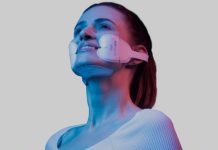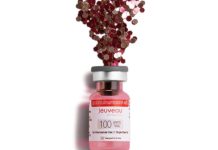From V-line procedures to double eyelid surgery.
As we celebrate the month of AAPI, it is important to discuss the unique aspects of Asian-American health, wellness and beauty,” says New York facial plastic surgeon Edward S. Kwak, MD. “As an Asian-American plastic surgeon, I am thrilled to help my patients feel confident and beautiful. While I approach all of my patients with a customized plan for treatment, I am able to see general trends in Asian facial beauty, and apply proven innovative surgical techniques to achieve the desired goals. Overall, I am proud to be an Asian-American plastic surgeon, and I am committed to celebrating the diversity and cultural richness of my patients.”
Here, four leading plastic surgeons share the most requested plastic surgery procedures by their Asian patients right now, including everything from V-line surgery to double eyelid surgery.
Asian Rhinoplasty
When it comes to Asian rhinoplasty, Dr. Kwak says the Asian nose has known anatomic differences. “In general, the Asian nose has thick skin and a smaller framework,” he explains. “Asian rhinoplasties typically involve increasing the height of the nasal bridge, refining the nasal tip and narrowing the nostrils. To do this surgery, the nose requires adding materials to make the desired changes. In the past, Asian rhinoplasties often utilized alloplastic (synthetic) implants to achieve increased height. However, these synthetic implants can lead to common complications, such as infection, implant mobility, deviations, asymmetries, and skin contracture. In addition, many patients often do not want to have synthetic materials in their bodies.”
Current trends in Asian rhinoplasty involve using cartilage-based grafts instead, which is considered more technically challenging. “Based on the amount of augmentation, there are three locations surgeons can obtain the necessary grafts for this surgery: the nasal septum, ear and rib,” Dr. Kwak continues. “The source for the necessary cartilage is carefully discussed with patients during their consultations.”
Facial Contouring
With the rise in K-pop and K-drama, Beverly Hills, CA facial plastic surgeon Kimberly J. Lee, MD says facial contouring and V-line surgery (aka mandibuloplasty) have been reaching increased popularity. “V-line surgery involves slimming the lower jaw to create a heart shape that gives a flattering appearance,” she explains. “Buccal fat removal can also be used to give a slimmer look while helping to contour the face into more of a heart shape. Whether it’s through buccal fat removal, threadlifting, V-line surgery or mentoplasty, the idea is to shape the face into a sculpted one that accentuates fuller cheeks and slimmer lower faces.”
New York facial plastic surgeon John Kang, MD says threadlifting using the latest state-of-the-art “vectoring” technique can achieve results that closely mirror those of an open facelift procedure. “It helps to achieve instant facial slimming for our patients who are worried about their faces looking too wide, especially when taking selfies or on Zoom meetings,” he explains. “The best part is that threadlifting doesn’t usually require any downtime to recover.”
Double Eyelid Surgery
“This has traditionally been a popular procedure to create a double eyelid crease, as many Asians are born with monolids,” says Dr. Kimberly Lee. “It is thought that this procedure makes the eyes more attractive by making the eyes look bigger and more seductive. Over the years, this procedure has evolved from looking more Caucasian to preserving the ethnic identity by creating creases that are not too high.”
“The eyes define the cultural facial identity for Asians,” adds Dr. Kwak. “Patients looking to have this procedure are looking to enhance and celebrate this culturally identifying feature. The surgery involves creating a delicate fold above the upper eyelid and is often associated with Asian eyelid cosmetic surgery. Common requests are to correct congenital asymmetries on the fold such as a shallow fold, asymmetric fold height or multiple creases. I also see many of my double eyelid patients wishing to correct functional eye concerns such as ptosis.”
According to Pasadena, CA plastic surgeon Lily Lee, MD, this procedure particularly appeals to East Asians (Japanese, Chinese and Korean). “This is a fairly simple procedure that is unique to Asian eyelid anatomy due to the different attachments of the eyelid opening muscle. The surgery is often done on clients when they are quite young—in their teens—and it’s outpatient with a fairly quick recovery.”
Aside from recognizing the cultural implications of this surgery, Dr. Kwak says plastic surgeons have to be keenly aware of the anatomic differences of the Asian eye. “Using traditional non-Asian blepharoplasty techniques can result in disruption of the cultural harmony of the eyes to the face,” he explains.
Fat Grafting
“Asian patients have wider and flatter bone structures, and as soon as their fat volume shrinks and the soft tissue under their skin becomes more lax, optically they appear even wider on pictures taken on smartphone or on Zoom calls,” Dr. Kang explains. “This can be easily remedied without resorting to open facelift surgery by using a combination of 3-D fat grafting. It won’t create greater width or roundness, but rather replenish anatomical zones that have naturally deflated.”
Dr. Kang says fat grafting can help recontour the entire face so that it appears more dimensional and youthful. However, when done by someone who isn’t qualified or properly trained, “it can do the opposite and create a more rounded-out or lollipop-like face, as often seen in some of the more famous celebrities. This would be a catastrophe that we as expert 3-D fat grafting surgeons who understand the power of optical illusion simply can’t comprehend.”
Mentoplasty
“Many Asian patients tend to have a wider chin that is shaped more like a ‘U’ or projects outward more than desired,” Dr. Kimberly Lee explains. “Shaving down or reshaping the chin can be done to create more of a V-shaped chin, or to soften its appearance. This is becoming popular because a wider chin, or one that projects more than desired, can make the overall face appear wider and elongated, while a refined chin can give the face a more refined appearance.”
Lower Eyelid Surgery
This procedure is one of Dr. Kang’s specialties, and people to come to him from across the country. “Asians generally tend to have more issues with excess fat both in the upper and lower eyelids, which often mistakingly gives off the wrong impression of being angry, tired or stressed, due to the bulging fat bags,” he says. “Back in the early ’90s during my fellowship days in facial plastic surgery, most surgeons were still approaching this procedure conventionally through a transcutaneous method. However, the entire surgery can often be done through a transconjunctival approach using a ‘no-touch’ technique, meaning we avoid any cutting on the outside of the eyelid. This is especially an attractive point for male patients who don’t want to give away any signs that they had cosmetic enhancement surgery.”






